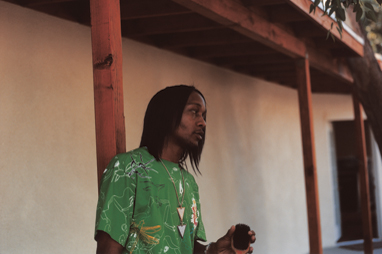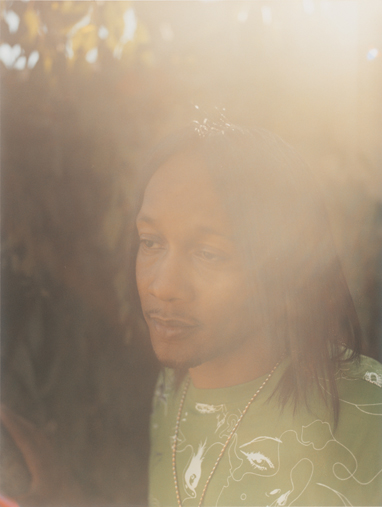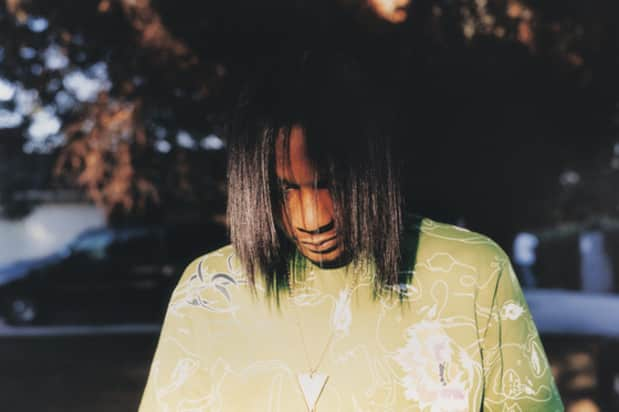Jail terms and funerals: the back-story of any classic rap album—especially the left-coast, gang-related kind—often seems to have one of these as its starting point. In this case the record is The Midnight Life, the latest offering from the infamous rapper/producer Quik, conceived in partnership with long-time collaborator rapper AMG under the collective name the Fixxers. The story actually begins with one of each. “One of our older comrades passed away last year,” explains AMG. “I seen Quik at the funeral and I ain’t really talked to him in a minute, you know people fade in and out and shit. We got to talking, like ‘I got some shit, you got some shit, so…’ we started mashin out.” In the midst of all that shit, Quik asked his erstwhile partner to go out on tour with him; the preparations for the road trip renewed ties from gangsta rap’s golden era, when AMG guested on Quik’s platinum debut album Quik is the Name and his productions for mutual friends 2nd II None and Penthouse Players Clique. The two have actually been allies even longer, since before either was signed, putting out LA underground classics like The Red Tape, which in turn led to Quik’s deal with Profile records. The reunion, however, proved to be short-lived, as Quik was jailed in summer 2006 on a two-year-old assault charge. Sentenced to 45 days in 2003 when he allegedly threatened his sister at gun-point during a heated argument, Quik never showed up to serve his time and though the wheels of justice turn extra slow in LA’s hazy atmosphere, when they eventually caught up to him, 45 days had become 150.

“When I got out and looked in the mirror and saw the age that five months in jail did,” Quik explains. “I was like, ‘This is scary! I don’t feel old in spirit but why do I look like this dark, sullen old man?’ My shit got accelerated…like goin through the whole time shit that Einstein used to talk about. Fuckin’ just creepy. The only good thing about it is I got out of jail on AMG’s birthday so my comin home was like a gift to him.” The idle ‘let’s get the band back together’ talk was taken up with a new sense of urgency, or as AMG says with characteristic bluntness, “When he came back we partied for like a month. Or two. Then we went back to mashin it out. Quik had a song called ‘Welcome Me Back’ he was talking big shit on and I had ‘Can U Werk Wit Dat.’ We took both to radio and the one everybody was calling us back on was ‘Can U Werk Wit Dat.”
The tense, sneaky-sounding synth line of ‘Werk Wit Dat’ has already blown on regional radio and is now infiltrating the national consciousness with a slick video, and it’s more or less the reason we’re sitting down to have this interview. The hook is AMG’s lazy, Nate Doggish flow sing-songing Diamonds on my fingers, couple on my toes/ Walked up in the club and seen so many hoes/ Can you work wit’ dat? The central question seems to be directed at fans, shorthand for “We just want to keep ballin forever, staying up all night and then dining on cheesy eggs and Alize the next morning with the freak of our choice, and rapping about it to subsidize this lifestyle indefinitely. Can we live?” To which they unhesitatingly answer themselves “yes” in the voice of a high-class Brazilian prostitute.
What makes the lightweight subject matter compelling is a winning sonic formula that fuses ominous West Coast moodiness with the snap and bass patterns that run the South. The low end response to the quietly percolating synth is a double bump-bump melded from brass sounds and an 808 kick, but the real payoff doesn’t arrive until Quik raps to his fantasy Doubletree hotel concubine: Get the robe out the clawwset/ And wait for me/ Don't think that I'm afraid to toss it/ You hate for me/ To stand you up, it makes you nauseous/ I'm late but can’t go to sleep because your pussy GAWgeous. On a remix version which starts off with a Jim Jones cameo, Quik takes his cadence further into complicated internal rhyme patterns, picking up the challenge laid down by a new generation of show-off lyricists like Lil Wayne and Chamillionaire. “After all these years,” says AMG, “that’s the first beat of mine he ever rocked on…y’know what I’m sayin? This guy…” he says with an exasperated eye-roll in Quik’s direction that speaks volumes about quirkiness and unrelenting perfectionism.

Born David Martin Blake, “this guy” is one of those rare artists like Nas or J Dilla whose life and music seem designed to answer a question right at the heart of hip-hop: what if a Mozart-sized talent happened to be born at ground zero of North America’s bleakest ghetto—Queensbridge or Detroit or in Quik’s case, the color-coded gang capital of Compton, California. A turntable prodigy who could accurately drop a phonograph needle on the right groove before he could talk, Quik is maybe the closest thing to a gangsta savant that the West has ever produced. His high-pitched drawl of a rap style bridged the gap between NWA’s G-talk and the next wave of more freestyle-oriented West Coast artists like Pharcyde and the Luniz, but it was behind the boards that he truly made his mark. He helped develop the signature melodic sound of G-funk with compositions like “Quik’s Groove,” then pushed its musicianship to ever higher levels. In 2002 he famously became the first hip-hop producer to flip a Bollywood sample on Truth Hurts’ “Addictive” but had been toying with sitars and eastern scales at least as far back as 1996 with “Why You Bullshittin?” for fellow Californian Suga Free.
Overall, his career is characterized by a restless innovation that’s ahead of the curve and usually the market too, connecting with regional love and critical respect more often than sales, at least on his own releases. None of his numerous albums ever outsold his first, Quik is the Name, but by his own count he’s produced or ghost-written some 200 songs that have sold in the 50 million range, with a client list including 2pac, Jay-Z and 8ball & MJG. The Fixxers album, due out in November, is a re-entry into the rap spotlight after his career arc bent from Great Black Hope to Best Kept Secret and—with major label push from Interscope—it may finally connect Quik with mass recognition.
“When I got out and looked in the mirror and saw the age that five months in jail did,” Quik explains. “I was like, ‘This is scary! I don’t feel old in spirit but why do I look like this dark, sullen old man?’ My shit got accelerated…like goin through the whole time shit that Einstein used to talk about. Fuckin’ just creepy." -Quik
When we actually get down to discussing his work on the record, Quik begins the conversation with an improvised concert of intricate piano runs, explaining he’s never formally studied music but “I can kinda translate what I hear into chords.” His speech reinforces the savant aura as well, a pronounced Snoop-like south central drawl sprinkled with the kind of words most people only use in Scrabble, every nuance conveying the book-smart kid who nevertheless cut school to run wild with the blood-affiliated Treetop Pirus. Although he’s clearly a studio obsessive who’s most comfortable discussing the finer points of sibilance, noise floors and phantom power, the conversation inevitably returns to funerals, jail terms and gang colors before too long. Quik has been dogged by gang-affiliated controversy—and sometimes tragedy—more or less from the beginning of his career.
Among the long list of stylistic firsts associated with his name, he’s credited by many on the West Coast with introducing the complicated skip and step footwork that became the modern version of the ‘Blood bounce’ and ‘Crip walk,’ routines as confrontational as gang signs in an era when the motto was “Gangstas don’t dance they boogie.” The dance was supposedly started with good intentions but taken the wrong way, much like the Total Track Productions logo on back of his early albums that many people assumed stood for Treetop Pirus. “My rep had already preceded me and I always caught grief behind these random things. BMG just reissued a greatest hits package and they put in the liner notes, ‘The spelling of his name without the c is to disassociate himself from the Crips.’ What they don’t understand is that I took the ‘c’ out of Quik cause ‘ck’ woulda meant ‘Crip killa.’ And I wasn’t. When it came down time to motherfuckers wantin to posse up and get the guns, I just couldn’t. I didn’t have the balls to go and take somebody’s life that hadn’t done nothin to me personally, I never did understand the logic behind that.”
Having witnessed the violent death of various homies including the promising rapper Mausberg, and being himself the target of an extortion scheme perpetrated by his own family members (“That was the going thing: extort a rapper,” he says, describing the situation that lead to his assault charge), Quik seems more than ready to embrace the climate change taking place in LA. “Compton is goin through gentrification right now, startin to look not so much like a war zone but like a beautiful neighborhood,” he says. “The gang thing…a lot of people are startin to come together more, bloods an crips are hangin out. Nobody wants to turn the party out cause they realize they’re invited in. It’s only the people that felt like they were outcast that wanted to cause the ruckus.”

Jail and its draining effects seems comfortably behind him now, leaving Quik to focus on his musical obsessions, coaxing magic sounds out of vintage Telefunken mics and Prophet synthesizers. Although it’s unformed and unfinished, the beats Quik has arrayed thus far for The Midnight Life show his signature inventiveness, but in a way that seems futurist where his previous work fetishized the warm analog sounds of Parliament and Curtis Mayfield. One track features Rich Boy guesting over a Galaga sample that sounds like a sped-up music box and a Scott La Rockish girls look sooo good on the hook. Another is built from a squishing sound that’s actually a hacksaw compressed into a musical register. Yet another has a pitched down Gypsy Kings loop slaved to a snare pattern playing a screwed cumbia. “Middle” prominently features a sound like a harmonium crossed with the phone-phreak of a dial up modem. Icy ’80s synthesizers prevail throughout, but one of the most memorable tracks is “Roll What You Got” wherein Quik raps about smoking That orange pumpkin/ Not that country bumpkin over an old school Wurlitzer hook, thumping drums and a buffalo gal’s “uh-huh.” Not so much throwback as displaced in time, it’s a Jeep beat that can’t be fit into a particular decade, until Quik explains he programmed it that morning, but with classic synth patches and drum sounds from his library of SP-1200 diskettes. It draws a nice line from the analog style Quik pioneered to the hybrid snap beat of “Werk Wit Dat.” He describes the importance of this continuity by saying, “It’s almost like stockpiling money and jewelry: you buy new shit and just put it with the old, as opposed to buyin new and getting rid of the old shit.”
But hair might actually be a better metaphor. The activator juice of days past is gone but whether in corn rows as now, Da Brat pigtails or a feathery perm, Quik’s tresses remain pimpishly long and never nappy, at once a blank canvas for new styles and an instantly recognizable trademark. Likewise, the finished sound of The Midnight Life might end up being defined by Quik’s more spacey ideas, by timeless classics or by simple AMG hooks and radio savvy strategy, but whatever the balance, it’s a soundtrack to the place where a gangsta boogie is just a dance after all.
The Fixxers, "Can U Werk Wit Dat?"
Quik live at FADER 48 party
The Fixxers f. Rich Boy, "So Good"
DJ Quik & AMG, "Trouble"
DJ Quik, "Tonite"
